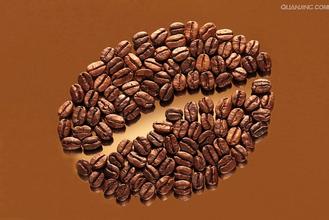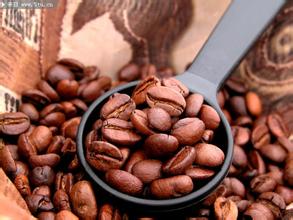What are the coffee producing areas in China? are there any coffee farms in China?
Blue Mountain Coffee (Blue Mountain Coffee) is a well-known coffee produced only in the Blue Mountain region of Jamaica in Central America, and only coffee grown in the Blue Mountain area above 1800 meters can be authorized to use the logo of "Jamaica Blue Mountain Coffee (BlueMountainCoffee)", accounting for 15% of Jamaica's total Blue Mountain Coffee production. Coffee grown between 457m and 1524 m above sea level is called alpine coffee, and coffee grown between 274m and 457m above sea level is called Jamaican coffee. Blue Mountain Coffee has mellow, bitter slightly sweet, soft and smooth characteristics, and slightly sour taste, can make the taste more sensitive, taste its unique taste, is the best of coffee.
Cubita (Amber Coffee) is all produced in the Crystal Mountain of Cuba, and it also has a high reputation in the coffee industry. Cuban Crystal Mountain Coffee ranks among the top several in the world. Crystal Mountain is adjacent to the Blue Mountain Mountains of Jamaica, with similar climatic conditions, which is comparable to the Blue Mountain Coffee of Jamaica. Cubita adheres to the principle of perfect coffee, only making individual coffee, picking coffee beans by hand, plus washing coffee beans to ensure the quality of coffee. Cubirta is like an elegant princess, with the characteristics of nobility, tenderness and grace. The balance is excellent, the bitter taste and the sour taste are well matched, and there will be a delicate, smooth, fresh and elegant feeling in the taste. The designated coffee at the Cuban embassy is called the unique Caribbean flavor coffee.
KopiLuwak (Kopi Luwak) is a recently invented coffee, produced in Indonesia, coffee beans are one of the civets' food range, but the coffee beans cannot be completely digested by the digestive system. The coffee beans are fermented in the civets' intestines and stomach and excreted by the faeces. The locals take out the coffee beans in the civet feces and then do the processing, which is the so-called "cat shit" coffee. This coffee tastes unique and tastes different. However, people who are used to this taste will never forget it for a lifetime. Due to the gradual deterioration of the wild environment, the number of civets is also slowly decreasing, resulting in a very limited output of this kind of coffee. People who can taste this coffee are very lucky.
Today, there are more than 100 varieties of coffee, but these more than 100 kinds of coffee are all derived from Arabica coffee, Robbda coffee and Liberian coffee, which come from different countries as follows:
Brazilian editor
The largest coffee producer, which accounts for 1/3 of the world's coffee consumption, accounts for 1/3 of the world's coffee consumption and has a place in the global coffee market, although Brazil faces several times more natural disasters than other regions. but its acreage is enough to make up for it. There are many kinds of coffee here, but its industrial policy is large and cheap, so there is not much premium coffee, but it is a good choice for mixing other coffees.
Other kinds of Brazilian coffee, such as Rio and Parana, can be produced in large quantities because they do not need too much care. Although the taste is rough, it is a kind of coffee with good quality and low price.
Cuban editor
In Cuba, the cultivation of coffee is regulated by the state. The best coffee growing area in Cuba is located in the Central Mountains. Because this area not only grows coffee, but also produces quartz, crystal and other precious minerals, it is also known as Crystal Mountain. Crystal Mountain is adjacent to the Blue Mountains of Jamaica, with similar climatic conditions and taste similar to Blue Mountain Coffee, comparable to the Blue Mountains of Jamaica. Therefore, the Cuban Crystal Mountain has become the object of comparison with the Jamaican Blue Mountains, which is also known as the "Blue Mountains of Cuba".
Cuban Crystal Mountain represents coffee is "Cubita" known as "unique Caribbean flavor coffee", "island coffee beans in the special coffee beans". It became the designated coffee at the Cuban embassy.
Colombian editor
This is the second largest coffee industry after Brazil, and is also the leader in the Columbia Maird Group (Colombia, Tanzania, Kenya). In addition, there are Asa Maird, Anwar Snow Arabica, Robsta). The more famous producing areas, such as "Medellin", "Manizares", "Bogota" and "Armenia", etc., all the coffee beans cultivated are Anicabi species, which are quite rich in taste, stable in quality and price, and the fried coffee beans are bigger and more beautiful.

Important Notice :
前街咖啡 FrontStreet Coffee has moved to new addredd:
FrontStreet Coffee Address: 315,Donghua East Road,GuangZhou
Tel:020 38364473
- Prev

Coffee or coffee beans, which kind of coffee beans are more suitable for hand brewing?
The origin of coffee plant can be traced back to millions of years ago, in fact, the real age when it was discovered can no longer be tested. It is only said that coffee is a shepherd named Kaldi in the highlands of Ethiopia. When he discovered that his sheep had inadvertently eaten the fruit of a plant, he became very lively and energetic, and discovered coffee ever since. All historians seem to be the same
- Next

Costa Rican Coffee individual Coffee Historical Origin and quality
The history of coffee cultivation in Colombia can be traced back to the Spanish colonial era in the 16th century, and there are many theories about the history of coffee in Colombia: one: it is said to come from the island of Haiti in the Caribbean and from El Salvador in Central America. Second: in 1808, a priest introduced coffee beans to Colombia for the first time from the French Antilles via Venezuela. One of them
Related
- Does Rose Summer choose Blue, Green or Red? Detailed explanation of Rose Summer Coffee plots and Classification in Panamanian Jade Manor
- What is the difference between the origin, producing area, processing plant, cooperative and manor of coffee beans?
- How fine does the espresso powder fit? how to grind the espresso?
- Sca coffee roasting degree color card coffee roasting degree 8 roasting color values what do you mean?
- The practice of lattes: how to make lattes at home
- Introduction to Indonesian Fine Coffee beans-- Java Coffee producing area of Indonesian Arabica Coffee
- How much will the flavor of light and medium roasted rose summer be expressed? What baking level is rose summer suitable for?
- Introduction to the characteristics of washing, sun-drying or wet-planing coffee commonly used in Mantenin, Indonesia
- Price characteristics of Arabica Coffee Bean Starbucks introduction to Manning Coffee Bean Taste producing area Variety Manor
- What is the authentic Yega flavor? What are the flavor characteristics of the really excellent Yejasuffi coffee beans?

